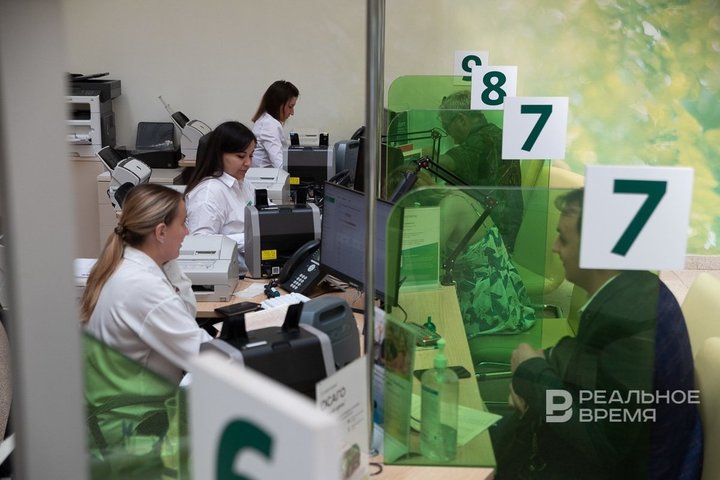Overdue debts of Tatarstan residents exceed 38 billion rubles
Collectors are buying up debts before court proceedings, as the Central Bank has made judicial recovery unprofitable

In Tatarstan, overdue consumer debt on loans has risen sharply. According to the Central Bank, the total amount increased by a third (+33%) over the year, reaching 38 billion rubles — significantly higher than the national average growth of +26%. Overdue debt across Russia has exceeded 1.5 trillion rubles and is expected to continue growing. Collectors are purchasing it in record volumes, preferring to recover debts before court proceedings. “The amount of debt is incomparable with the amount of court fees, and the efficiency of judicial recovery leaves much to be desired," experts interviewed by Realnoe Vremya explained.
“There is more mythology and hype around this trend than real threats to the population”
Since the beginning of the year, debt collection agencies have purchased a record volume of Russians' debts from microfinance institutions. The total value of these deals amounted to 38.4 billion rubles, which is by 19% more than a year earlier, according to Vedomosti, citing analysts from ID Collect. The main driver of these sales was a drop in prices — the average cost of debt this year fell to 16.38% of its nominal value, which is 17.16% and 18.95% lower than in the previous two years.
Debt has become cheaper due to the improved quality of debt portfolios, experts explain. One key factor was the improvement in the average number of days past due (DPD). In April–May, this figure stood at 220 days — 20% less than last year — resulting in a “younger” portfolio overall.

Another driver of the market was the introduction of a state duty on the reassignment of rights in court — the successor in title must now pay 15,000 rubles. Aware of this, collectors preemptively brought their portfolios to court, obtained numerous writs of execution, and accumulated liquidity. With the proceeds, they acquired more overdue debt. This trend will continue into the second half of 2025, believes Elman Mekhtiev, CEO of the Financial Literacy Development Association and former president of the National Association of Professional Collection Agencies (NAPCA).

“Banks and microfinance institutions are seeking to offload toxic assets more quickly, avoiding court proceedings”
The interviewee also noted that the value of overdue debt depends on a vast number of factors — not least on how effective collection efforts are, both at the pretrial stage by collectors and at the judicial stage by bailiffs. “And if a person knows that at the judicial stage the recovery rate in 2024 was just under 12%, it’s unrealistic to expect them to be willing to pay the full amount at the pretrial stage. And since the average price is essentially an average across the board, with debts being both sold and collected at both stages, the resulting price reflects that,” Elman Mekhtiev explained.

With the introduction of state duties, the financial market as a whole has begun shifting toward pretrial recovery. As a result, microfinance institutions are putting more of such debts up for sale. According to experts, the appeal of court-processed portfolios is declining — collectors now prefer to purchase debts before they reach court. Consequently, the market is shifting toward pretrial recovery.
Yaroslav Kabakov, director of strategy at Finam Investment Company, also linked the growing interest of collectors in buying debt to the market trend of portfolio “rejuvenation”: the duration of delinquency is decreasing, making the assets more liquid and more promising in terms of repayment. The reduced price — down to 16.38% of the nominal value compared to 18.95% a year earlier — makes the purchase of such assets even more attractive, despite the challenging economic environment, he stressed.

According to him, the overall direction of the market is shifting from judicial recovery to pretrial settlement: “This is evidenced by both the decline in prices for court-processed portfolios — down to as little as 1–1.5% of the nominal value — and the growing share of rejuvenated, pretrial cases in auctions.” The head of the Financial Literacy Development Association agrees: “The measures proposed and gradually implemented by regulators are making judicial recovery unprofitable in the current environment, given that the amount of debt is not comparable to the amount of court fees, and the effectiveness of judicial recovery leaves much to be desired. That is precisely why the market is moving toward pretrial recovery.”

Possible “deterioration in the overall financial stability of the population”
In Russia, overdue debt owed by the population to banks is rising. Overdue payments on credit cards alone have exceeded half a trillion rubles (575.9 billion). These are the combined debts of 8.3 million cardholders whose payments are overdue by 90 days or more, according to data from Scoring Bureau cited by Forbes. The share of overdue debt in the total volume of credit cards has reached 12%, while debts on them account for 11.3%. The reasons include the mass issuance of cards in previous years and the increasing debt burden on citizens. Experts believe that the peak of problematic debt is expected in the summer–autumn of 2025.
While the country continues to experience high levels of consumer indebtedness — with many borrowers holding 2–3 loans — the Central Bank’s strict measures prevent them from refinancing. As a result, they are forced to turn to pawnshops. Overdue debt is growing mainly among young borrowers.
According to the Bank of Russia, as of 1 June 2025, total overdue debt of individuals nationwide exceeded 1.5 trillion rubles, which is 14% higher than at the beginning of the year (1.3 trillion) and 26% higher than a year earlier (1.2 trillion). In Tatarstan, the increase in overdue debt is even greater: it reached 38 billion rubles (+17% since the start of the year and +33% year-on-year).
“Although there is growth, it is not critical. The Central Bank’s actions within the framework of macroprudential limits have already reduced the population’s debt burden, so even with the rise in overdue debt, the pace of that growth will slow down,” believes Elman Mekhtiev.

As noted by Finam Investment Company, by the end of 2024, more than 6.8 million Russians had overdue loan payments, with the total volume of debt overdue by more than 30 days exceeding 1.93 trillion rubles. The average debt per borrower was around 196,000 rubles. Yaroslav Kabakov believes this trend is likely to persist and intensify in the coming months, with peak pressure from problematic debt expected in the second half of 2025 or early 2026:
“High interest rates, declining incomes, rising indebtedness, and tightening credit conditions are leading more Russians to struggle with their debt burden. This threatens not only an increase in the volume of portfolios transferred to collection agencies but also greater pressure on the financial system as a whole. Banks and microfinance institutions will be forced to increase reserves, curb the issuance of new loans, and reduce their risk appetite. In the long term, more serious consequences are possible: a decline in consumer activity, rising social tensions, and a deterioration in the overall financial stability of the population.”

According to him, reaching the peak of problematic debt may take longer than the summer–autumn period of 2025, as the situation is influenced by the growth in nominal wages of Russians.
“In 2023 and 2024, income growth rates were truly record-breaking, which helped smooth over many credit-related problems. Now, however, we are likely to see a slowdown in this growth, which will further exacerbate the issue of loan servicing for individuals. With the key interest rate currently at 20%, and the Central Bank forecasting an average rate of 19.5% for the year, falling to 18% by year-end, rates remain very high. Therefore, problematic debt may continue to accumulate until there is a more significant reduction in rates. As a result, the peak could occur not at the end of 2025 but sometime during 2026,” the speaker concluded.
Economist and CEO of the analytical agency BusinessDrom, Pavel Samiev, also believes that sales of overdue debt will continue to grow for now: “Currently, there is a significant increase in overdue debt on the banking and microfinance markets — debts that collectors can still work with.” According to him, this growth has been ongoing for two years, likely even accelerating this year.

The market is indeed shifting towards pretrial recovery, the interviewee confirmed, citing colleagues from the professional community of collectors. “The peak of problematic debt is still ahead; we have definitely not reached it yet. I believe it can be expected this year, with the maximum likely to be reached by the end of the year,” Pavel Samiev added.